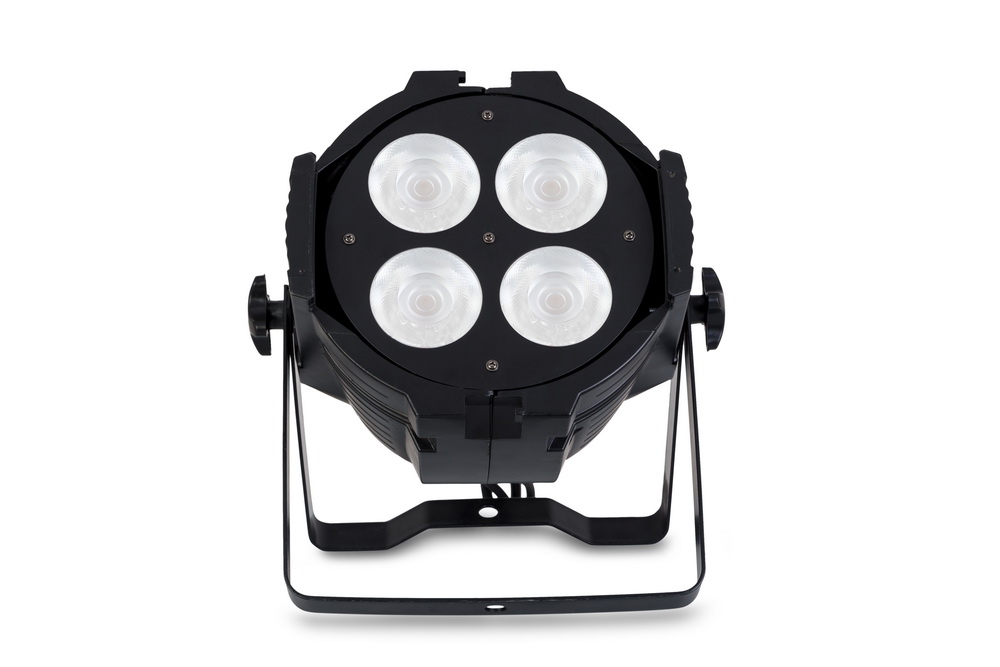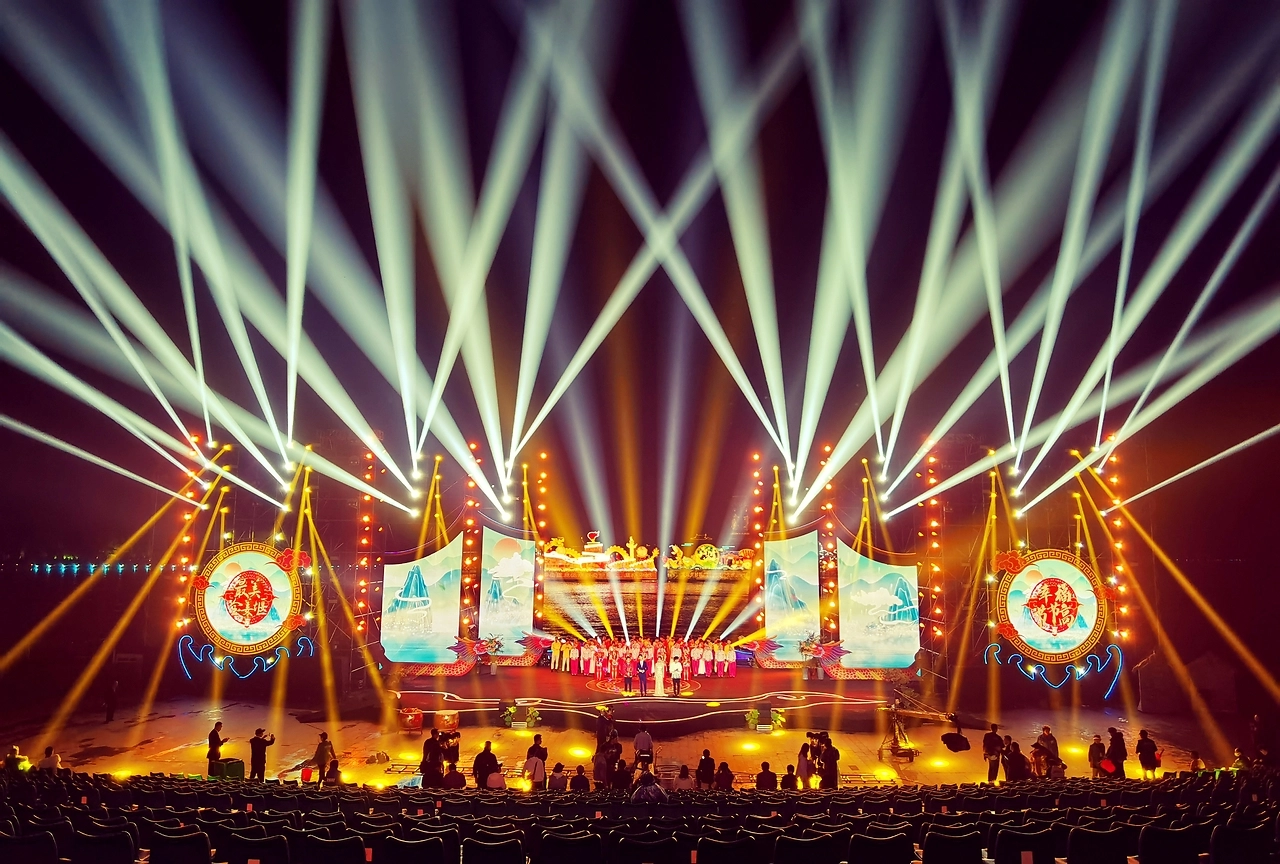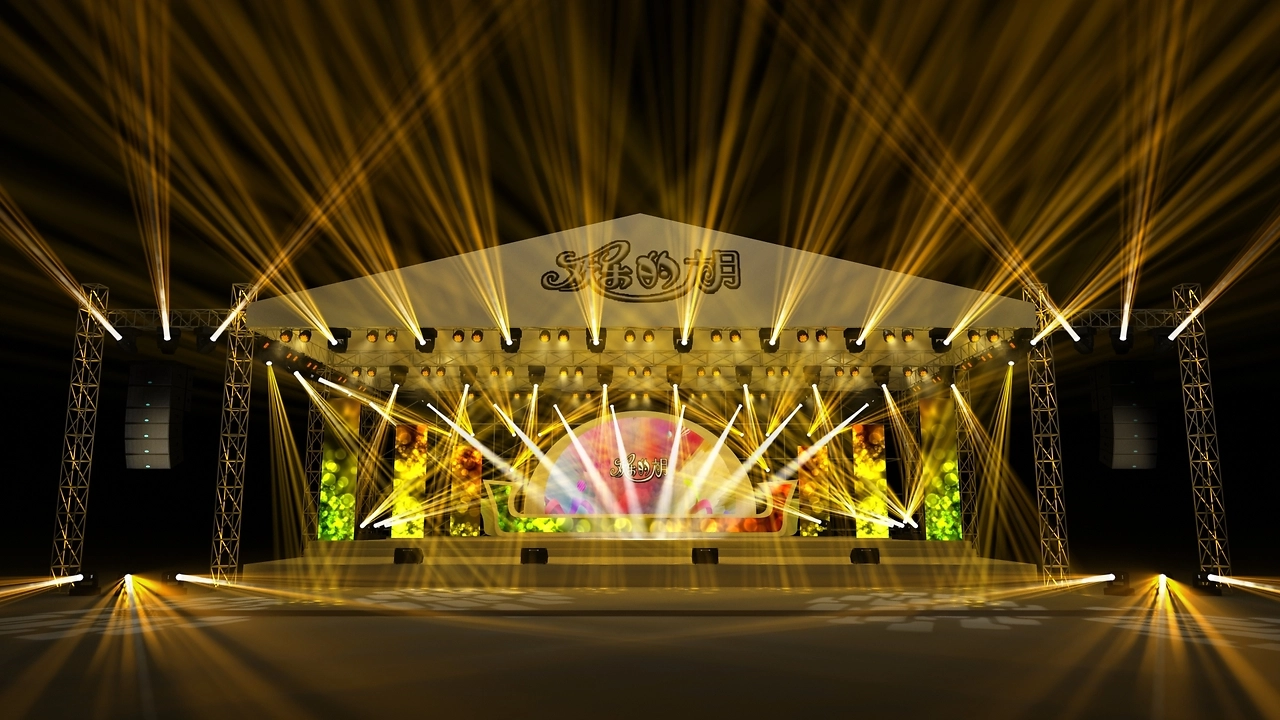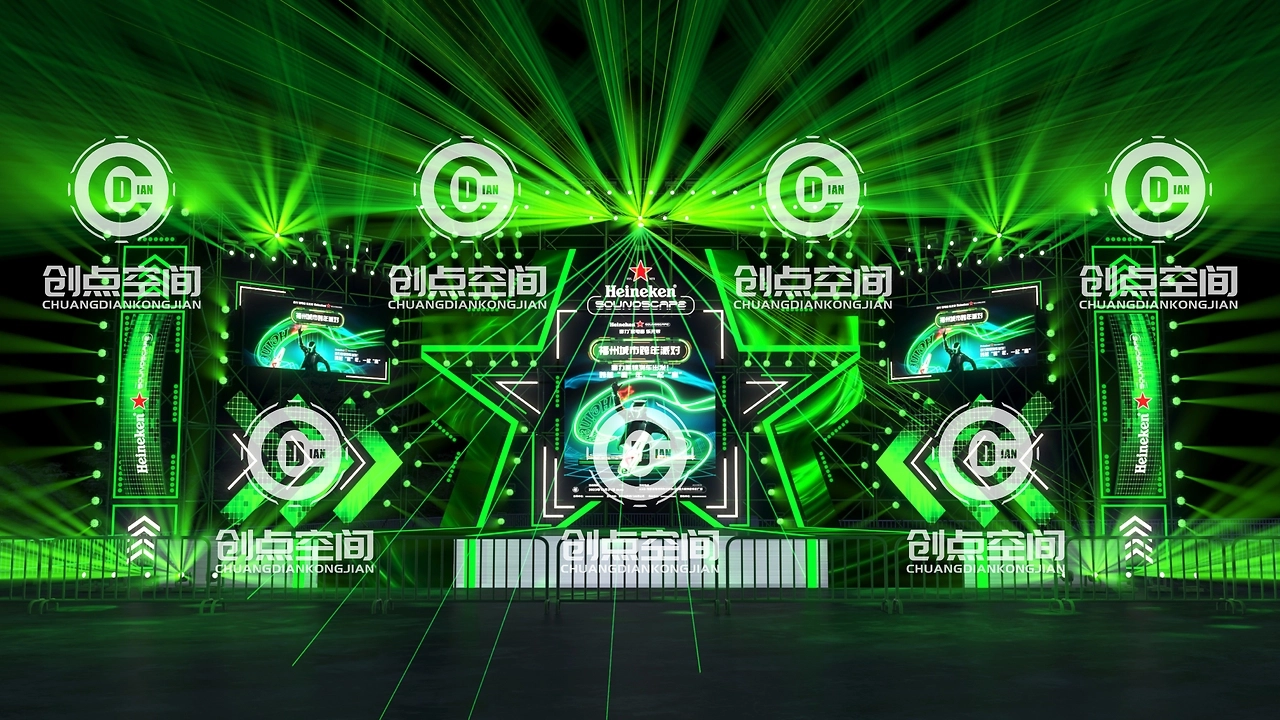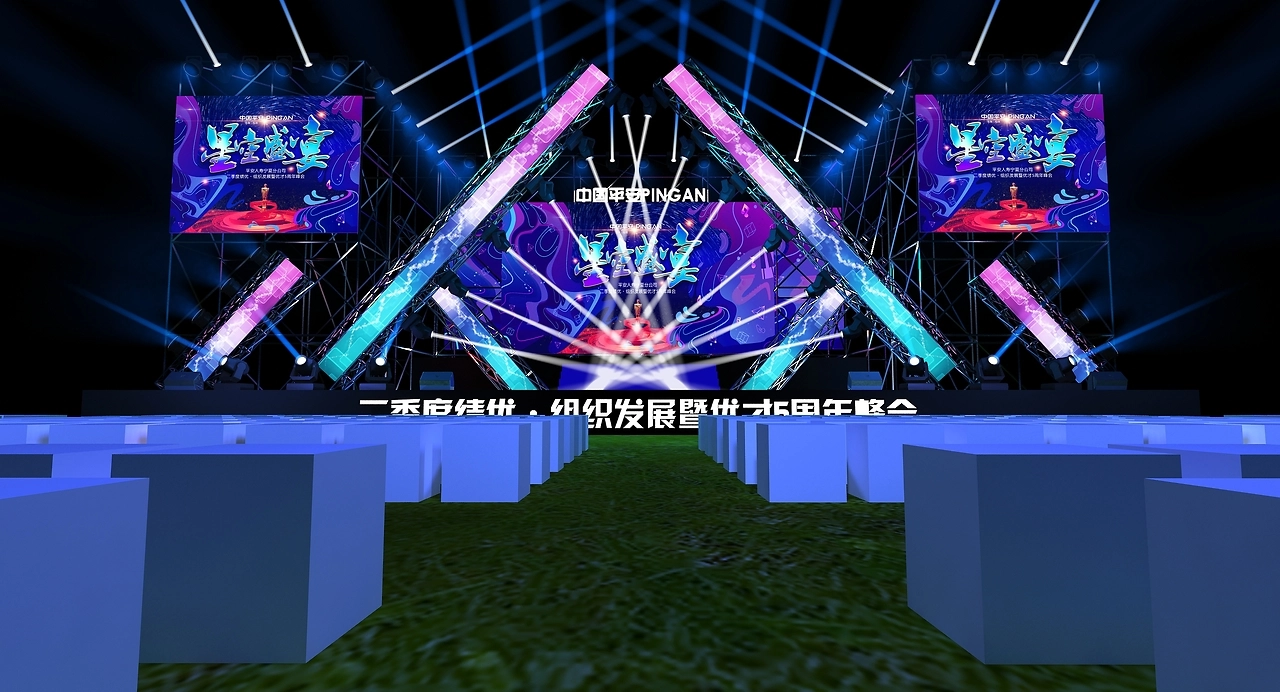1 Preface
Star rated hotels are an indicator industry for urban economic development, and their development pattern directly affects the development of the city. The multifunctional banquet hall in the hotel is the main reception venue for business tourism, conferences, and themed exhibitions, reflecting the overall level of a star rated hotel's external reception services.
The traditional multifunctional banquet hall lighting system mainly meets basic requirements such as conventional lighting and general conference lighting. The modern and innovative banquet hall lighting system adopts high-tech means to create an experiential banquet hall mainly based on "multimedia digital special effects audio-visual technology", emphasizing the integration of sound, light and electricity with simple operation and rich content. Its functional positioning is diverse, which can meet various performance requirements such as large-scale conferences, various wedding banquets, product launches, fashion shows, short dramas, acrobatics, popular music, comprehensive cultural and entertainment performances, local opera performances, etc. Therefore, designing and applying high stability, high-quality lighting, audio, video equipment, and corresponding systems is the most basic guarantee to meet these performance requirements.
This article takes the lighting, video, mechanical hanging, and central control system of the multifunctional banquet hall of Guangzhou Sunshine Hotel as an example to analyze the design concept, and jointly explore the innovation and development of stage lighting, video, stage design, and other aspects in the multifunctional hall of modern star hotels.
2. Functional and structural design of banquet hall stage
Due to different functional positioning, star rated multifunctional banquet halls require different stage types to meet different performing arts functions, such as conference stage mode and performing arts stage mode, comprehensive cultural and entertainment performance stage mode, etc., with completely different styles. However, due to the relatively fixed characteristics of banquet hall decoration design and objective conditions such as aesthetic requirements, it is unscientific and not advisable to arbitrarily build different types of stages in the venue. This requires designing a basic stage that can meet the needs of regular performances based on different functional positioning, equipped with corresponding basic lighting, audio, and video systems, stage mechanical systems, and fully considering reserving some equipment system interfaces for expansion to different stage modes when there are special performance requirements, to meet the creative needs of the director.
(1) Conventional (Basic) Stage Structure Design for Banquet Halls
The total area of the banquet hall is approximately 1100m2, and a basic conventional stage is designed in this space to meet the needs of various large, medium, and small conventional cultural and entertainment performances, wedding banquets, conferences, small company product launches, and other activities held in the banquet hall. The stage design dimensions are a rectangular stage with a width of about 15m, a depth of about 6m, and an area of about 90m2. The height is 60cm, and four three-level walking stairs are set on both sides of the stage and the front edge of the stage entrance to facilitate actors, hosts, or leaders to enter and exit the stage from different directions (see Figure 1).
(2) Structural design of extended large stage for banquet hall
On the basis of a conventional stage, it extends outward to a depth of about 2.5m, forming a stage with a width of about 15m, a depth of about 8.5m, and an area of about 128m2, suitable for large and medium-sized performance activities as well as various conferences. Four three-level walking stairs are also installed on both sides of the stage and at the forefront of the stage entrance (see Figure 2).
(3) Stage structure design during T-stage performance
For some large-scale brand press conferences and fashion shows, T-shaped stages of different lengths can be connected outside the regular stage, where actors or various brand products can be displayed to the audience. At the same time, various lighting can be fully utilized, such as regular lights, computer lights, multimedia digital lights, which can be used as lighting and dyeing on the stage and stage respectively. Form an extended stage to achieve interactive and close-up viewing effects (see Figure 3).
(4) Separate small stage design
For small and medium-sized banquets, performances, conferences, etc., the multifunctional hall can be divided into two small halls of about 500m2 each, and two small stages can be built. The stages are detachable aluminum alloy stages with an area of about 10m × 4.5m (see Figure 4).
Design of Stage Lighting System for Banquet Hall 3
3.1 System design positioning and related basis
According to the multifunctional requirements of the banquet hall, the first consideration in the design of the lighting system is comprehensive reservation, flexibility, safety and reliability, to meet the usage requirements of different customer groups. The characteristic of the design is that the lighting is primary and secondary, emphasizing practical principles.
When designing stage lighting effects, fully consider the actual venue of the Sunshine Hotel banquet hall, and comprehensively consider various performance modes and styles with similar functions, as the artistic concept basis for the design of the stage lighting system. On the other hand, according to the usage needs of the banquet hall, high-performance control systems, high-quality stage lighting fixtures, and various lighting and mechanical equipment are selected as the equipment configuration basis for deepening the design of the banquet hall stage lighting system.
3.2 Basic Function Design of Lighting System
In terms of layout, the effect lighting of the banquet hall consists of basic lighting such as surface lighting, side lighting, ceiling lighting, and backlighting. In addition, video effect lighting (digital lighting) is configured to meet the video projection effect of the entire banquet hall. At the same time, the conventional lighting LED fixtures and crystal lights in the banquet hall have been incorporated into the entire performance system.
3.2.1 Surface Light System Design
Surface lighting is mainly used to illuminate the front performance area, providing positive illumination for performers on stage, highlighting character shapes, or creating a three-dimensional effect on objects on stage (see Figure 5).
(1) Projection orientation
On the front of the stage, hidden in the ceiling, there are four surface lights that are used for different occasions. The angle of the surface light can be adjusted according to the actual situation.
(2) Select equipment
① 750W spotlight;
② 575w pattern computer light (see Table 1).
(3) Projection method
① Vertical projection: achieving a uniform effect below the stage performance area;
② Cross projection: Enhance the brightness of the central area and depth of the stage;
③ Key projection: Strengthen the lighting of local stage performance areas.
3.2.2 Side Light System Design
The function of side lighting is to create a sense of direction for the light source from the side of the stage, which can be used as auxiliary lighting to illuminate the actors' faces and enhance the level of the scenery, rendering the characters and stage space environment. Factors such as the angle, direction, distance, type of lighting fixture, and power of the projected light can cause various side lighting effects.
(1) Side light azimuth
On both sides of the main stage.
(2) Select equipment
750W spotlight.
(3) Arrangement and projection method of lighting fixtures
① The styling light from one or both sides can emphasize and highlight the contour of the side, suitable for expressing volume effects such as reliefs and portraits;
② Unilateral expression of strong yin-yang effects;
③ Bilateral lighting can express personalized characteristics of plywood lighting, but it is necessary to adjust the light ratio between the front auxiliary lighting and the side lighting to achieve a more complete styling effect (see Figure 6).
3.2.3 Top Light System Design
The top light power supply hangs from the stage ceiling, considering both aesthetics and load-bearing issues. It is designed in the form of a grape trellis, with lighting fixtures hung on top to provide necessary illumination for the performance area that extends deep into the stage. At the same time, the number of lighting fixtures can be appropriately increased according to different performance forms and considering the weight and safety of the grape trellis.
(1) Top light orientation
Grape trellis above the stage.
Whatsapp:+86 134 1860 8878
(2) Select equipment
750w spotlight, 575w computer pattern light, dye light.
(3) Arrangement and projection method of lighting fixtures
The top light and surface light are connected to illuminate the main theater area. When connecting, attention should be paid to the height of the character. The top light position can be used as a fixed-point light and special effect lights can be placed, and some lights can be selected to enhance the lighting of the performance area pivot; Strengthen the lighting of the character design and scenery space at the back of the stage. The lighting fixtures we have chosen here have good heat dissipation, low temperature, high strength, no glare, good safety performance, and are durable and long-lasting. At the same time, for the conference mode, three color soft lights were also selected, which can also provide conference lighting (see Figure 7).
3.2.4 Composition of Computer Lights, Conventional Lights, and Digital Lights System
The composition of the computer light, conventional light, and digital light system is shown in Figure 9
Design of Lighting Fixture Hanging System
Consider factors such as engineering quantity, aesthetics, and load-bearing capacity after increasing the number of lighting fixtures. Based on the premise of not damaging the decoration design, an electric hoist and an aluminum alloy special TRUSS frame are used on the basis of the original decoration. Through the principle of track sliding lifting and automatic door flipping design, it can be lowered to the performance state during use; When not in use, it can be raised and hidden in the decorative ceiling, with the same metal material as the original decoration style, without affecting any aesthetics. It has the characteristics of beautiful and elegant appearance, smooth and silent operation, etc. It ensures better lighting effects while also considering aesthetics, maintaining consistency in the overall decoration style (see Figure 8).
Design of Central Control System for Performance 5
Each star rated hotel has its own decoration style, which differs greatly from professional stage theaters in terms of functional design and application. Therefore, corresponding strategies need to be made based on the functional positioning of the banquet hall itself and the actual decoration situation on site. The lighting in the basic stage is similar to that in the theater, while the lighting fixtures above the hall, including multimedia digital lights, computer lights, and conventional lights, are designed to be aesthetically pleasing and effectively controlled. Electric lifting frames are used to hide the lighting fixtures inside the decoration, and different lighting fixtures are lifted and lowered according to different performance modes to meet different performance requirements.
The banquet hall adopts different equipment systems, including sound system, stage mechanical system, and lighting system, and the lighting system includes advanced digital lighting system, computer lighting system, and conventional lighting system.
The digital lighting system uses advanced network control, while the computer lighting and conventional lighting systems use traditional DMX512 signal control. The audio system and stage mechanical system also use other control methods such as RS232 protocol. In response to this situation, in the process of system integration, it is considered to centralize the control of lighting, sound, and machinery, integrating all systems into a central control system and achieving centralized control through a simple one click button.
6 Problems and Solutions in the Design and Construction Process
Whatsapp:+86 134 1860 8878
The application of professional stage lighting in star rated hotels is an expansion of the lighting industry in multifunctional halls such as TV studios and theaters. It is a new attempt, but inevitably encounters some problems during the trial process, which requires the joint efforts of all parties and engineering workers to solve various problems encountered.
(1) Installation position of lighting fixtures - The installation of lighting fixtures should take into account the professional stage lighting position, but due to the limitations of on-site installation conditions, the lighting positions could not be strictly installed according to the standards. Instead, after a long period of consideration and negotiation, the position was finally determined. For example, surface lighting was originally designed on one lamp stand, but now it has been changed to multiple lamp stands. By adjusting the angle of the lamps and lamp stands, the lighting can be laid out.
(2) Installation method of lighting fixtures - As it is located in the banquet hall of a star rated hotel, the overall aesthetic requirements are very high, so it cannot be the same as a regular stage. Taking into account various factors, the final decision was made to use a lifting hanger installation method. It is usually hidden in the ceiling and lowered to the designated position during use, killing two birds with one stone.
(3) Equipment system debugging - involves multiple engineering tasks such as stage machinery, conventional lighting, stage lighting, video, audio, and camera in the entire system integration. The difficulty of integration is unprecedented in previous banquet halls, and it also involves interface protocol issues for various device integrations. After multiple rounds of technical solution discussions and modifications, the effect of one click control of sound, light, and electricity has been achieved, but there is still room for improvement in many aspects (see Figures 10-13).
The practical application effect of 7 in entertainment performances
